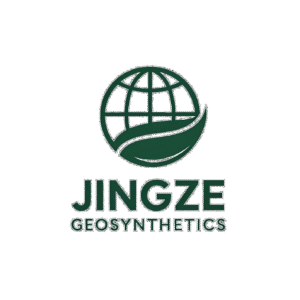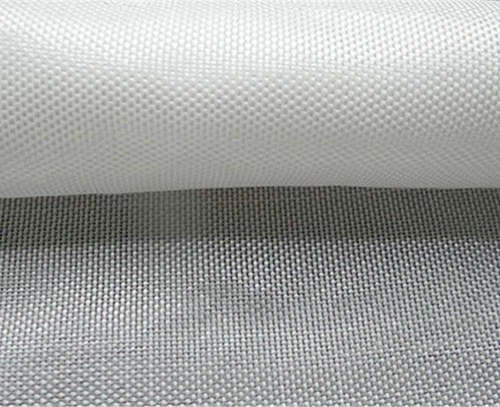Introduction
In the world of modern civil engineering and geotechnical construction, one material that plays a pivotal role is woven geotextile fabric. This synthetic textile, known for its high tensile strength and durability, is used in a wide range of applications — from road stabilization and embankment reinforcement to drainage systems and retaining walls.
In this comprehensive guide, we will take an in-depth look at woven geotextile fabric, its manufacturing process, physical properties, typical applications, and how it compares with non-woven geotextiles. Whether you are a contractor, distributor, or procurement specialist, this article will help you understand when and why you should use woven geotextile in your projects.
What Is Woven Geotextile Fabric?
Woven geotextile is a type of geosynthetic material made by interlacing two sets of yarns or tapes at right angles to form a strong, stable fabric. These fabrics are usually manufactured using high-strength synthetic polymers like polypropylene (PP) or polyester (PET), offering excellent resistance to chemical and biological degradation.
Manufacturing Process: How Is Woven Geotextile Made?
The production of woven geotextiles involves several stages:
Yarn/Tape Production: Polymers are extruded into tapes or filaments.
Weaving Process: Tapes or filaments are woven together using looms in plain, twill, or other patterns.
Heat Setting and Finishing: The woven fabric is heat-treated to stabilize its dimensions.
Quality Inspection: Fabric is tested for tensile strength, permeability, and UV resistance before packaging.
The weaving process gives the material a high tensile strength with low elongation, making it suitable for load-bearing and reinforcement applications.
Key Technical Properties of Woven Geotextile
| Property | Typical Value |
|---|---|
| Material | Polypropylene or Polyester |
| Tensile Strength | 20–200 kN/m (customizable) |
| Elongation at Break | < 25% |
| Aperture Size | 0.1 – 1.0 mm |
| UV Resistance | Excellent |
| Chemical Resistance | High (acids, alkalis, etc.) |
| Standard Widths | 1–6 meters |
| Roll Length | 50–200 meters |
Advantages of Woven Geotextile Fabric
✅ High Tensile Strength: Supports heavy loads and prevents deformation.
✅ Effective Separation: Prevents mixing of aggregate and subsoil.
✅ Soil Reinforcement: Increases the bearing capacity of weak subgrades.
✅ Durability: Resistant to UV rays, bacteria, and chemicals.
✅ Cost-Effective: Reduces long-term maintenance and replacement costs.
✅ Customizable: Available in various widths, weights, and colors.
Woven vs Non-Woven Geotextile: What’s the Difference?
| Feature | Woven Geotextile | Non-Woven Geotextile |
|---|---|---|
| Structure | Interlaced yarns | Needle-punched or heat-bonded |
| Strength | Higher | Lower |
| Elongation | Lower | Higher |
| Best Use | Reinforcement & separation | Filtration & drainage |
| Texture | Smooth, grid-like | Soft, felt-like |
Conclusion: Choose woven geotextile for load-bearing and reinforcement applications, and non-woven geotextile for filtration and drainage.
Applications of Woven Geotextile in Engineering Projects
1. Road and Highway Construction
Prevents rutting and base aggregate loss.
Improves load distribution and extends service life.
2. Railway Embankments
Reinforces rail beds and prevents soil migration.
3. Retaining Walls and Embankments
Increases wall stability and soil retention strength.
4. Landfills and Waste Containment
Used beneath geomembranes as a protective layer and separator.
5. Airport Runways
Provides stable subgrade and load support under asphalt or concrete.
6. Mining and Oil Field Pads
Used for ground reinforcement under heavy equipment.
7. Coastal and River Bank Protection
Resists erosion under revetments or riprap.
Installation Tips: Best Practices for Woven Geotextile
Site Preparation: Remove sharp rocks and debris to avoid punctures.
Proper Overlap: Use 0.3–0.6 m overlap between rolls depending on load and soil conditions.
Anchoring: Anchor edges with soil or pins to prevent movement.
Avoid Stretching: Lay fabric flat to maintain integrity.
Backfilling: Cover with aggregate or soil immediately after placement.
FAQs about Woven Geotextile
Q1: Can woven geotextile be used underwater?
Yes. It is often used in marine and underwater pipeline projects for separation and stabilization.
Q2: Is woven geotextile biodegradable?
No. It is made from synthetic polymers designed for long-term durability.
Q3: What roll sizes are available from Jingze?
Widths from 1m to 6m; roll lengths from 50m to 200m (custom available).
Q4: Does woven geotextile allow water to pass through?
Yes, though its permeability is lower than non-woven types.
Q5: Can I use woven geotextile for erosion control?
Yes, especially when combined with riprap, turf, or other erosion systems.
Case Study: Road Stabilization in Southeast Asia
Project Location: Indonesia
Client: Infrastructure Engineering Firm
Challenge: Weak clay soil base caused frequent road collapse.
Solution: Jingze supplied 200,000 m² of high-strength woven geotextile (80 kN/m) as a separator and reinforcement.
Result: Load capacity improved by 40%, lifespan extended by 15+ years.
Why Choose Jingze Woven Geotextile?
🌐 Direct Factory Supply: Competitive pricing without intermediaries.
🛠 Custom Specifications: We tailor fabric strength, width, and roll size.
🧪 Strict Quality Control: In-house lab testing with ISO standards.
🚢 Global Logistics Support: Export to 30+ countries with flexible shipping.
Conclusion
Woven geotextile fabric is an essential geosynthetic product for infrastructure development, offering unmatched strength, durability, and cost-efficiency. It’s the go-to choice for contractors and engineers working on roads, railways, retaining walls, and landfills.
Whether you need standard sizes or customized solutions, Jingze Geosynthetics is ready to be your trusted partner in geotechnical innovation.
📩 Contact us today to get a free quote or technical consultation for your next project.
🌍 Jingze Geosynthetics — Reinforce the Future.


